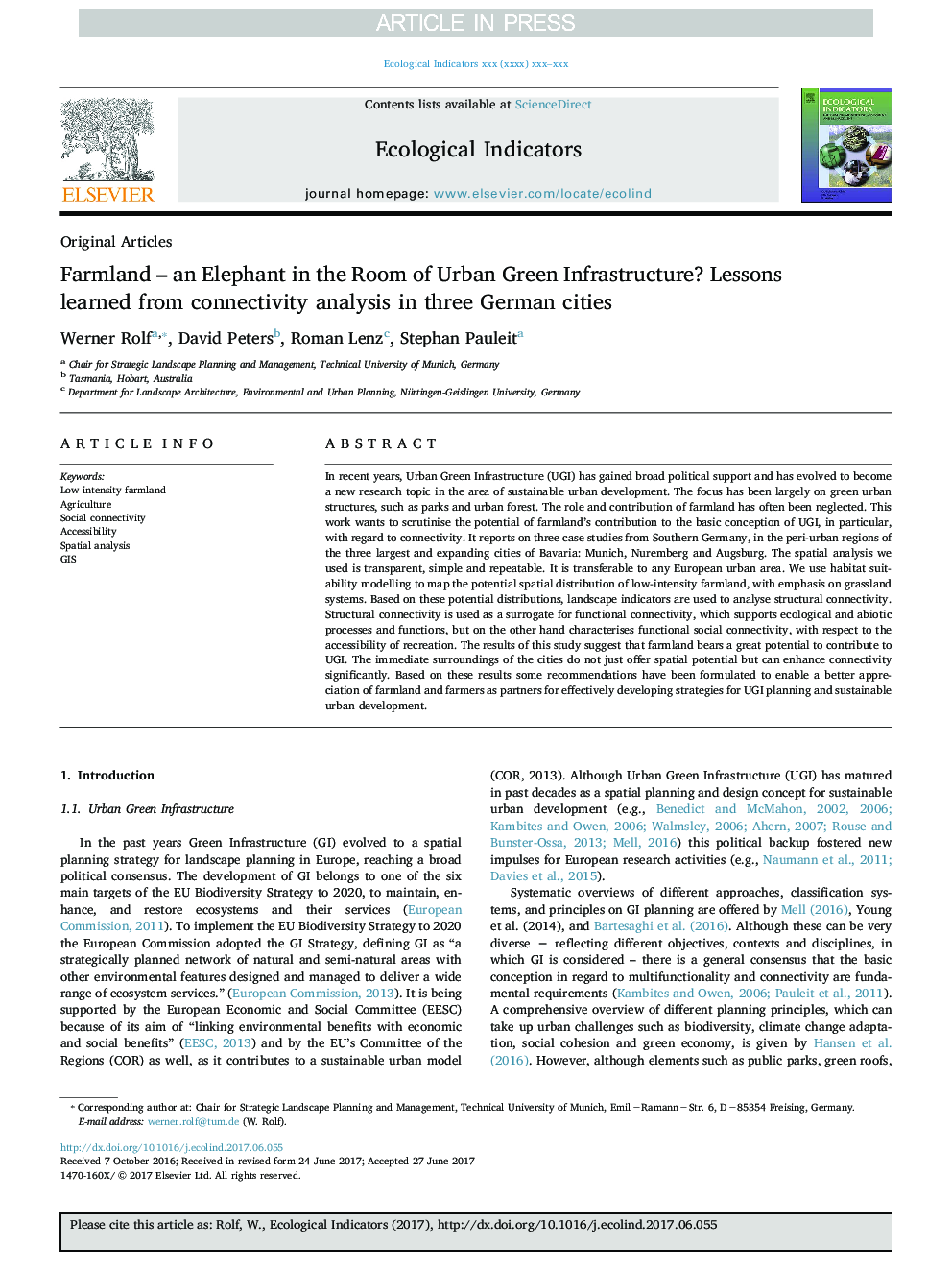| Article ID | Journal | Published Year | Pages | File Type |
|---|---|---|---|---|
| 10223306 | Ecological Indicators | 2018 | 13 Pages |
Abstract
In recent years, Urban Green Infrastructure (UGI) has gained broad political support and has evolved to become a new research topic in the area of sustainable urban development. The focus has been largely on green urban structures, such as parks and urban forest. The role and contribution of farmland has often been neglected. This work wants to scrutinise the potential of farmland's contribution to the basic conception of UGI, in particular, with regard to connectivity. It reports on three case studies from Southern Germany, in the peri-urban regions of the three largest and expanding cities of Bavaria: Munich, Nuremberg and Augsburg. The spatial analysis we used is transparent, simple and repeatable. It is transferable to any European urban area. We use habitat suitability modelling to map the potential spatial distribution of low-intensity farmland, with emphasis on grassland systems. Based on these potential distributions, landscape indicators are used to analyse structural connectivity. Structural connectivity is used as a surrogate for functional connectivity, which supports ecological and abiotic processes and functions, but on the other hand characterises functional social connectivity, with respect to the accessibility of recreation. The results of this study suggest that farmland bears a great potential to contribute to UGI. The immediate surroundings of the cities do not just offer spatial potential but can enhance connectivity significantly. Based on these results some recommendations have been formulated to enable a better appreciation of farmland and farmers as partners for effectively developing strategies for UGI planning and sustainable urban development.
Related Topics
Life Sciences
Agricultural and Biological Sciences
Ecology, Evolution, Behavior and Systematics
Authors
Werner Rolf, David Peters, Roman Lenz, Stephan Pauleit,
